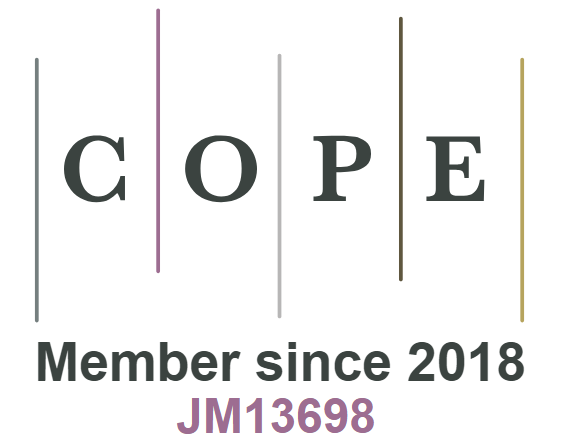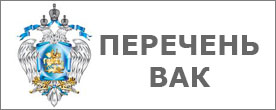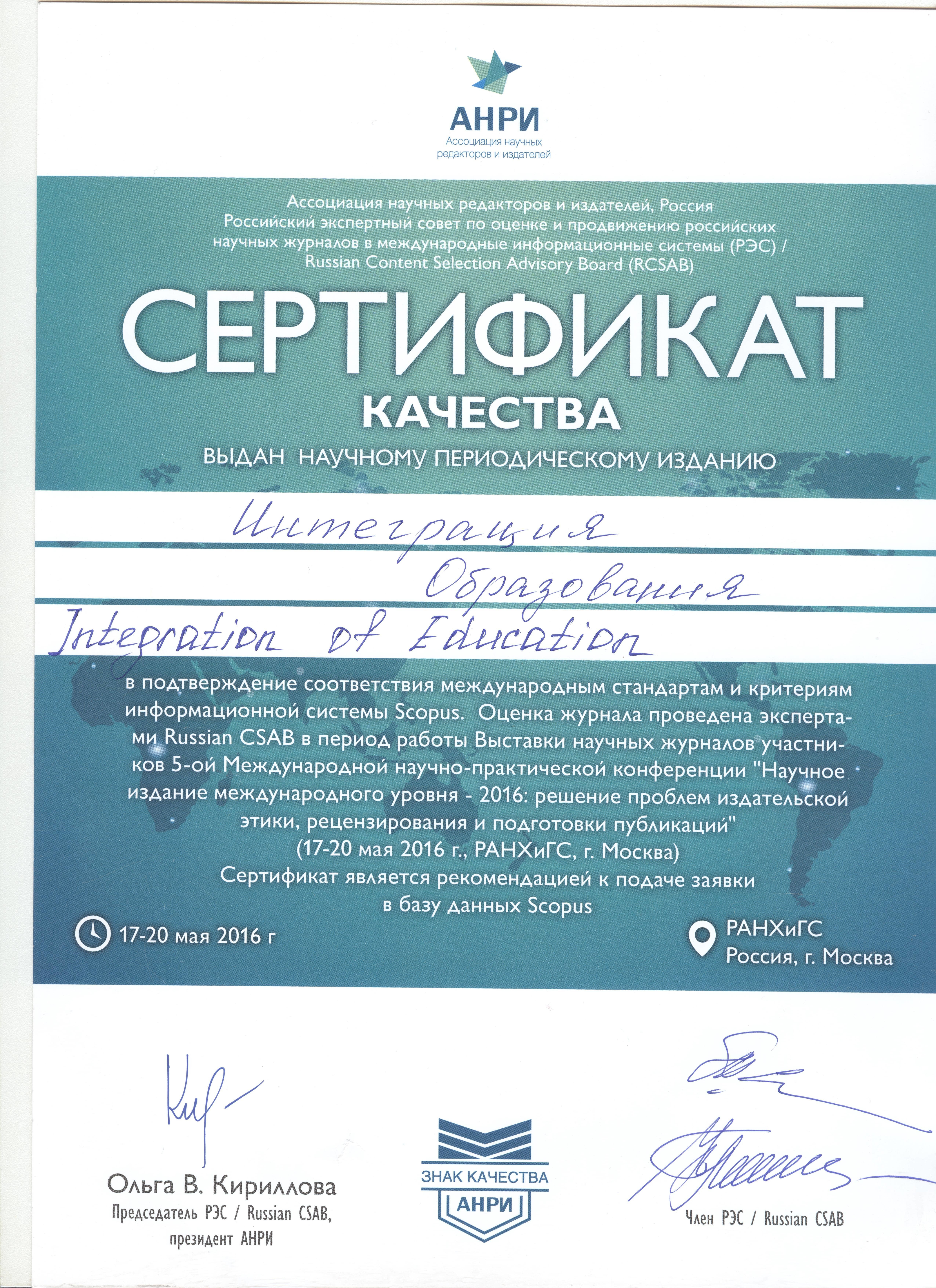УДК 378.147.4-057.87
DOI: 10.15507/Inted.079.019.201502.039
DEVELOPMENT OF PEDAGOGICAL MODEL OF TRAINING STUDENTS IN INNOVATIVE ACTIVITY AT THE NATIONAL RESEARCH UNIVERSITIES PRACTICING COMPREHENSIVE TEACHING OF THIS ACTIVITY
Bobrovskaya Elena Alekseevna
(head of Quality management system, Kyrgyz-Russian Slavic University named after the first President of the Russian Federation Boris Yeltsin (44, Kievskaya Str., Bishkek, Kyrgyzstan) This email address is being protected from spambots. You need JavaScript enabled to view it.)
Naumkin Nikolai Ivanovich
(head, Chair of Design Principles for Mechanisms and Machines, Ogarev Mordovia State University (68, Bolshevistskaya Str., Saransk, Russia), Dr. Sci., Ph.D. (Engineering), This email address is being protected from spambots. You need JavaScript enabled to view it.)
Kupryashkin Vladimir Fedorovich
(research assistant professor, Chair of Design Principles for Mechanisms and Machines, Oragev Mordovia State University (68, Bolshevistskaya Str., Saransk, Russia), Ph.D. (Engineering), This email address is being protected from spambots. You need JavaScript enabled to view it.)
Shekshayeva Nataliya Nikolayevna
(Lecturer, Chair of Design Principles for Mechanisms and Machines, Oragev Mordovia State University (68, Bolshevistskaya Str ., Saransk, Russia), This email address is being protected from spambots. You need JavaScript enabled to view it.)
The paper is concerned with the development of a pedagogical model for methodological system of preparing students of national research universities to innovative engineering (IE) embracing the idea of growing their competence in this activity. It is shown that it is the network of national research universities (NRU) due to itscapacities that determine the development of the national innovation system. The main feature of the proposed model is the gradual formation of students’ competence in innovative engineering. Its first stage - theoretical training in how to get an intangible product innovation within the study of a new integrated course “Fundamentals of innovative engineering” (FIE), the second one – a hands-on training in how to get tangible innovative products within the traditional summer visiting schools of students and young scientists. The model traditionally includes target, conceptual, content, procedural and technological and reflexive and diagnostic components. Target component includes the goal – to further students’ competence in IE and learning objectives to achieve it. Conceptual component - defines the general concept of study, namely the achievement of stated goals based on the integration of theoretical and practical learning the basics of IE. Content component is based on the knowledge learned by the students in the study of all previous disciplines, disciplines and a number of disciplines of practical training IE. Procedural and technological component includes the methods, forms and means of instruction, including the newest innovation (technology of digital production). Reflexive and diagnostic component involves diagnosis and self-test of the level of acquisition of competencies of IE. Throughout the training there is an accumulative scoring system, and the model itself is implemented as a business game “Company 2”. Such integration of means with methods ensures a syner getic effect of the system on the whole.
Keywords: innovative engineering activities; competence; components of pedagogical models; national research university; national innovation system; methodical system; pedagogical model; material innovative products; intangible innovative products.
For citation: Bobrovskaya E. A., Naumkin N. I., Kupryashkin V. F., Shekshayeva N. N. Razrabotka pedagogicheskoj modeli podgotovki studentov nacional’nyh issledovatel’skih universitetov k innovacionnoj dejatel’nosti pri kompleksnom obuchenii jetoj dejatel’nosti [Development of pedagogical model of training students in innovative activity at the national research universities practicing comprehensive teaching of this activity]. Integracija obrazovanija = Integration of Education. 2015, vol. 19, no. 2, pp. 39-47. DOI: 10.15507/ Inted.079.019.201502.039





























